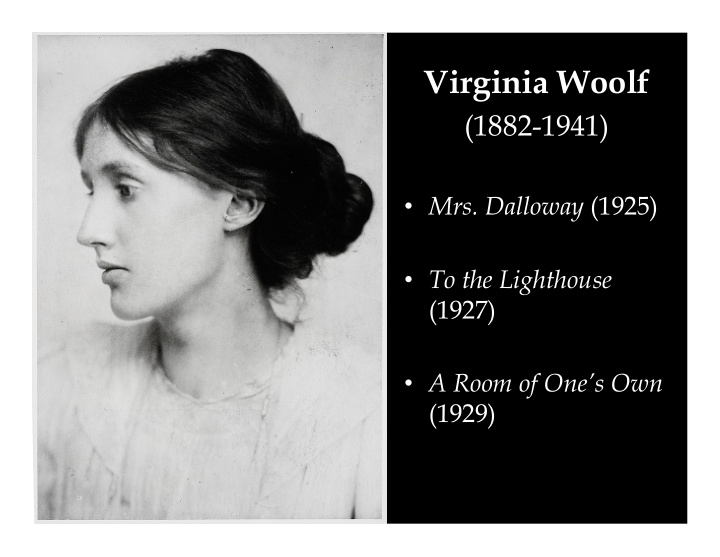



Virginia Woolf (1882-1941) • Mrs. Dalloway (1925) • To the Lighthouse (1927) • A Room of One’s Own (1929)
“The continuous flow of sense-perceptions, thoughts, feelings, and memories in the human mind; or a literary method of representing such a blending of mental processes in fictional characters, usually in an unpunctuated or disjointed form of ! interior monologue. The term is often used as a synonym for interior monologue, but they can also be distinguished…the stream of consciousness is the subject-matter while interior monologue is the technique for presenting it… An important device of ! modernist fiction and its later imitators, the technique was pioneered by Dorothy Richardson in Pilgrimage ( 1915 - 35 ) and by James Joyce in Ulysses (1922), and further developed by Virginia Woolf in Mrs Dalloway (1925) and William Faulkner in The Sound and the Fury (1928).” (Chris Baldick. Oxford Dictionary of Literary Terms. Oxford; New York: Oxford University Press, 2008)
Pierre-Auguste Renoir, Moulin de la Galette (1876) !
Georg Simmel, “The Metropolis and Modern Life” (1903) " ! “The psychological basis of the metropolitan type of individuality consists in the intensification of nervous stimulation which results from the swift and uninterrupted change of outer and inner stimuli…. the rapid crowding of changing images, the sharp discontinuity in the grasp of a single glance, and the unexpectedness of onrushing impressions.” !
Marcel Proust, A la recherche (vol. 1) !
Marcel Proust, A la recherche (vol. 6) !
Ford Madox Ford, from # Joseph Conrad: A Personal Remembrance !
Recommend
More recommend